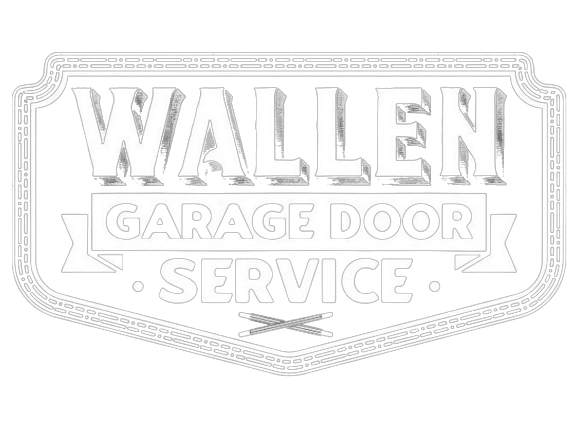Garage doors are not only a functional element of your home but also a significant contributor to its aesthetic appeal and overall security. They often serve as one of the first impressions of your home’s exterior and act as a barrier against potential intruders and environmental elements. Given their importance, it’s natural for homeowners to carefully consider their options when installing or replacing a garage door.
One of the most common questions from homeowners is: “How much is a 16×7 garage door installed?” The answer varies based on many factors that can affect the total cost. These include the choice of materials—ranging from economical steel to premium wood—the inclusion of advanced technology features such as automated openers and smart controls, and whether the installation is done by professionals or as a DIY project. Additionally, the geographic location, the complexity of the installation, and any additional modifications to the garage structure can affect the final price.
This guide aims to break down these factors in detail, providing you with comprehensive insights into what contributes to the cost of installing a 16×7 garage door. By understanding these elements, you will be better equipped to make informed decisions that align with both your budget and your home’s needs.
Understanding Garage Door Costs
Types of 16×7 Garage Doors
When considering a new garage door, the material you choose is critical not only for the aesthetics of your home but also for the door’s longevity and maintenance requirements. Here’s a breakdown of the most common materials used for 16×7 garage doors:
- Steel: Steel doors are highly durable and offer great value for their cost. They are resistant to warping and require minimal maintenance. However, they can be prone to dents and rust if not properly coated or if the coating is damaged.
- Aluminum: Similar to steel, aluminum is lightweight and resistant to rust, making it an excellent choice in humid climates. While it is generally more expensive than steel, it’s less likely to dent. However, it may not offer the same level of security as steel due to its lighter weight.
- Wood: Wooden doors provide a classic and customizable appearance that many homeowners value. They can be more expensive and require more maintenance, such as regular painting or staining to prevent weathering and decay.
- Composite: Composite garage doors are made from a mixture of recycled wood fibers and plastic. They offer the look of wood without extensive maintenance. Composites are durable and have good resistance to weathering and cracking.
Each material offers a different balance of cost, durability, maintenance, and aesthetic appeal, which should be considered in light of your personal preferences and the climate in which you live.
Technology and Features
Modern garage doors can include various technological enhancements that improve their utility and efficiency. Here are some of the key features:
- Insulation: Insulated garage doors are essential for maintaining temperature control in your garage, especially if it’s attached to your home. This can lead to energy savings by stabilizing the internal temperature and reducing the energy required to heat or cool your home.
- Windows: Adding windows to a garage door can enhance its appearance and bring natural light into your garage. However, they can also affect the door’s insulation effectiveness and security.
- Automatic Openers: The majority of garage doors are now equipped with automatic openers for convenience and safety. Advanced options include features like Wi-Fi connectivity, which allows you to operate the door remotely via a smartphone app.
The inclusion of these technologies will impact the cost of your garage door but can provide significant benefits in terms of convenience and energy efficiency. When asking “How much is a 16×7 garage door installed?” it’s important to consider these features as part of your overall budget and needs.
Installation Insights
DIY vs. Professional Installation
Choosing between DIY and professional installation of a garage door is a decision that impacts not just your budget but also the future functionality and safety of the door.
DIY Installation:
- Benefits: The primary advantage of DIY installation is cost savings. For those who have a good understanding of mechanical systems and access to the necessary tools, DIY can be a cost-effective solution. Additionally, it allows for a deeply personal engagement with your home improvements and the satisfaction of completing the work on your own schedule.
- Risks: The risks associated with DIY garage door installation are significant. The process involves heavy lifting, working with high-tension springs, and precise alignment that requires specific tools and knowledge. Mistakes in installation can lead to performance issues, increased wear and tear, and even severe injuries. Furthermore, DIY installation might void warranty claims on the door and its components.
Professional Installation:
- Benefits: Opting for professional installation eliminates the guesswork and potential hazards associated with DIY installations. Professionals bring expertise and experience, ensuring that the garage door is installed according to manufacturer specifications and local building codes. This expertise often translates into a more efficient and safer installation process, with the added benefit of warranties for both materials and labor.
- Why It’s Often the Better Choice: The complexity of garage door systems makes professional installation the safer and more reliable option. Professionals handle everything from ensuring the tracks are aligned and the door is balanced, to setting up the garage door opener. This not only saves time but also protects your investment by ensuring optimal performance and longevity of the door.
What to Expect During Installation
Step-by-Step Overview:
- Site Preparation: Before the new door arrives, ensure that the garage area is clear and accessible. This involves removing vehicles, tools, and other obstructions that could hinder the installation process.
- Removal of the Old Door: This step is crucial and involves dismantling and disposing of the old garage door safely. It requires careful handling to avoid damage to the garage structure.
- Frame and Track Setup: Professionals will set up the frame and tracks first, ensuring they are level and securely fastened to handle the door’s weight and movement.
- Door Panel Installation: Installation of the door panels begins at the bottom, moving up panel by panel. Each section is connected to the track system and checked for smooth operation.
- Spring Installation: Installing the torsion springs is one of the most hazardous parts of the installation process, requiring precise tension adjustments for balanced lifting.
- Opener Installation and Configuration: After the mechanical parts are installed, the automatic opener and its components are set up. This includes electrical wiring and programming the opener according to the user’s preferences.
- Final Adjustments and Testing: The last step involves fine-tuning the door’s balance and alignment, testing the reverse safety features, and ensuring all moving parts function smoothly without excessive noise.
Average Time Required:
- Installation times can vary based on several factors, including whether the setup is for a new installation or a replacement, and the type of garage door being installed. Generally, a straightforward replacement takes about 4 to 6 hours, while new installations might require additional time for setup and adjustments.
When evaluating “How much is a 16×7 garage door installed?”, remember to consider not only the upfront costs of materials and labor but also the long-term benefits of a professional and secure installation. This investment enhances the functionality, safety, and aesthetic appeal of your home.
Cost Breakdown
When planning to install a 16×7 garage door, understanding the associated costs is crucial. Here we provide a detailed breakdown to help you budget effectively.
Average Price Range
The question “How much is a 16×7 garage door installed?” doesn’t have a one-size-fits-all answer due to the variety of options and factors affecting the price. Typically, the cost ranges from approximately $750 to $4,000. This wide range includes basic, non-insulated steel doors on the lower end and higher-end models made from premium materials or with advanced features on the upper end.
- Economic Options: Basic steel or aluminum doors without insulation or windows can cost between $750 and $1,200.
- Mid-Range Options: Insulated doors, or those made of more durable materials like composite or certain woods, might range from $1,200 to $2,500.
- High-End Options: Premium doors with custom designs, superior insulation, built-in security features, or specialty materials such as high-grade wood or reinforced composites can cost between $2,500 and $4,000 or more.
Factors Influencing the Final Cost
- Location: Geographic location can affect installation costs due to differences in labor rates, the cost of living, and local building regulations.
- Material Choice: The type of material not only affects the purchase price but also the long-term maintenance and durability of the door. For example, wood requires more upkeep than steel, potentially adding to the total cost over time.
- Additional Features: Features such as energy-efficient insulation, stylish windows, or advanced technological components like smart openers increase upfront costs but can provide value through energy savings and increased home security.
Possible Extra Costs
Beyond the price of the garage door and its installation, several additional costs can affect your overall budget:
- Old Door Removal: Disposing of the old garage door can incur charges, especially if it’s made from heavy or hazardous materials like certain metals or old wood treated with chemicals.
- Hardware Replacement: If existing tracks, springs, and openers are not compatible with the new door or are in poor condition, they may need replacing, which adds to the cost.
- Structural Modifications: Sometimes, modifications to the garage’s structure are necessary to accommodate the new door, particularly if you are switching to a door of a different size or type. This might include reinforcing the walls or altering the façade.
Planning for these expenses will provide a more comprehensive budget and help avoid unexpected costs during your garage door installation project. When asking, “How much is a 16×7 garage door installed?” consider both the immediate and long-term financial implications of your choices to ensure you invest wisely in your home’s value and functionality.
Maintenance and Upkeep
Proper maintenance is key to extending the lifespan and enhancing the efficiency of your garage door. Regular attention can prevent costly repairs and ensure your door operates smoothly year-round.
Regular Maintenance Tips
Regular maintenance is crucial for the longevity and efficiency of your garage door. Neglecting this can lead to premature wear and tear, increased energy costs if the door is insulated, and potentially hazardous malfunctions.
- Visual Inspection: Monthly, examine the door for signs of wear, such as rust, loose hardware, or frayed cables. Check the alignment of the door and ensure it closes evenly on both sides.
- Lubrication: Every six months, lubricate the moving parts of the door, including rollers, tracks, hinges, and springs, with a silicone-based lubricant to ensure smooth operation.
- Balance Test: Disconnect the automatic opener and manually open the door halfway. A well-balanced door will stay in place, supported by its springs. If it falls or rises, the tension needs adjustment.
- Cleaning: Clean the door surfaces regularly, especially if you have a wooden door, to prevent dirt build-up and corrosion. Use mild soap and water for cleaning, avoiding abrasive cleaners that can damage the finish.
When to Call a Professional
While many maintenance tasks can be handled on your own, certain situations require professional expertise. Knowing when to call a professional can save you from further damage and higher repair costs.
- Spring Issues: If the springs are noisy or if the door is not balanced (as indicated by the balance test), professional service is needed. Torsion springs, in particular, are under high tension and can be dangerous to adjust or replace without proper tools and training.
- Opener Malfunctions: If the door doesn’t open or close with the opener, first check the batteries in the remote and ensure the opener is plugged in. If issues persist, professional diagnostics are needed to assess electrical or mechanical faults.
- Severe Damage: Significant damage, such as bent tracks or large dents in the door panels, can hinder operation and require technical expertise to repair or replace affected components.
Routine maintenance not only keeps your garage door functioning properly but also helps detect issues before they become serious problems. Remember, for the question “How much is a 16×7 garage door installed?” part of the answer lies in considering the ongoing maintenance costs. Regular DIY care and timely professional checks are advisable to ensure your garage door continues to function effectively and safely.
FAQs
- What is the best material for a 16×7 garage door?
- Steel: Durable and low maintenance, ideal for most homes.
- Wood: Classic look but requires regular maintenance.
- Aluminum: Light and corrosion-resistant, great for humid areas.
- Composite: Durable, attractive, and needs minimal upkeep.
- Steel: Durable and low maintenance, ideal for most homes.
- How long does it take to install a 16×7 garage door?
- Installation usually takes about 4 to 6 hours, but it can vary. If the installation involves structural changes or complex features, it might take longer.
- Installation usually takes about 4 to 6 hours, but it can vary. If the installation involves structural changes or complex features, it might take longer.
- Can I install a 16×7 garage door myself?
- DIY installation is possible if you’re skilled and have the right tools. However, due to safety risks like heavy lifting and handling high-tension springs, professional installation is often recommended.
- DIY installation is possible if you’re skilled and have the right tools. However, due to safety risks like heavy lifting and handling high-tension springs, professional installation is often recommended.
- Are there any hidden costs in installing a new garage door?
- Additional costs might include removing the old door, making structural adjustments, or upgrading features. Also, if your existing garage door opener isn’t compatible with the new door, you may need a new opener.
- Additional costs might include removing the old door, making structural adjustments, or upgrading features. Also, if your existing garage door opener isn’t compatible with the new door, you may need a new opener.
- How often should a 16×7 garage door be serviced?
- Service your garage door at least once a year for optimal performance and safety. This includes checking the balance and inspecting and lubricating parts. In harsh weather conditions, more frequent maintenance may be necessary.
Conclusion
Choosing the right garage door is a significant decision that impacts both the aesthetic appeal and functionality of your home. It’s essential to select a door that not only complements the style of your house but also meets your practical needs for security, insulation, and durability. Professional installation is crucial, as it ensures that the door operates smoothly and efficiently, safeguarding your investment by minimizing future maintenance needs and maximizing the door’s lifespan.
As you consider various options for your new garage door, think about how the style will integrate with your home’s design and how features like insulation and advanced security will contribute to your daily comfort and peace of mind.
WALLEN GARAGE DOOR REPAIR AND INSTALLATION SERVICES IN HAMPTON ROADS, VA
YOUR TRUSTED PARTNER IN GARAGE DOOR SOLUTIONS!
Let Wallen Garage Door Services help you make the right choice. Our expertise ensures that your garage door installation is handled professionally and your door is set up for long-term performance. Contact us for guidance and installation that you can trust.
Remember, the right door and installation can make a significant difference in the enjoyment and functionality of your home. We look forward to assisting you with your garage door needs and answering any questions you might have, including “How much is a 16×7 garage door installed?”







